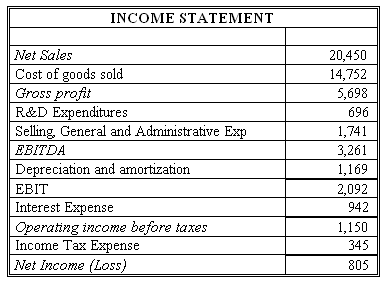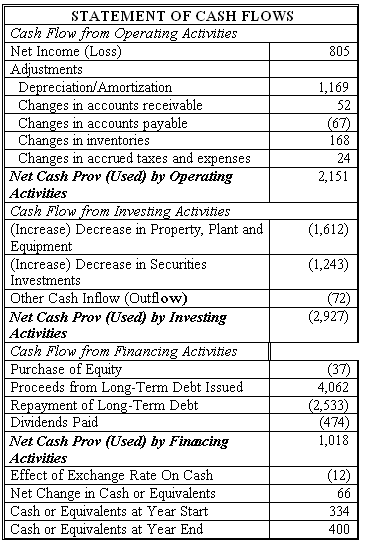Seeing is believing!
Before you order, simply sign up for a free user account and in seconds you'll be experiencing the best in CFA exam preparation.
Basic Question 5 of 7
Connie's Sporting Goods (CSG) has net income of $805 million for 2016. Using information from CSG's financial statements below, find what FCFF and FCFE should be for CSG. Assume the income tax rate is 30%.



User Contributed Comments 12
| User | Comment |
|---|---|
| danlan2 | Also FCFF =CFO+Int(1-Tax rate)-FCInv =2151+942*(1-0.3)-1612 =1198 and FCFE =CFO+Net Borrowing-FCInv =2151+(4062-2533)-1612 =2068 |
| Oarona | Thanks danlan2 |
| Leese | Above FCFF was given as 805+1169+942*(1-0.3)-1612-(-52+67-168-24)=1198. Am a little confused. Shouldnt working capital be -52-67-168-24=-311 (a decrease in accounts payable means we paid out more money, right? So FCFF= NI 805 Depr 1169 Interest 942(1-0.3) FCInv (1612) WCInv (311) FCFF 710 Am I missing something? I followed example on pp 387-389 CFAI vol 4 2010. Can anyone help? |
| Leese | I think I have answered my own question: here we are adding back the change in accts rec so they must have decreased and we are deducting the change in accts payable so they must have decreased also. Overall working capital has decreased, so we add it back to find FCFF. Is that correct? |
| vatsa | Leese, calculate FCFF and FCFE startin from CFO. Your life will be lot easier and can save time as well, it will help in exam. |
| johntan1979 | Yes, save time, save life, start with the shorter formula i.e. CFO And by the way, I suppose equity borrowing is not included in net borrowing which is why the $37 stock buyback is not counted? |
| hks101 | The idea of FCFE is how much cash flow is available to equity holders. Borrowing money from equity holders is not earning money and returning to equity holders. Stock buyback is an example of FCFE usage, just like issuing dividends. |
| robertucla | Learn both ways. You never know what test is going to through at you on game day. |
| robbiecow | FCFF can be derived from FCF + Interest Expense ...captures everything, but the needed term thats used in all the calculations below (Interest) NI + NCC + Int*(1-t) - WCinv - FCinv ... EBIT(1-t) + NCC - WCinv - FCinv ...EBIT has 4 letters so there are 4 inputs EBITDA(1-t) + NCC(t) - WCinv -FCinv ...same as above CFO + Int*(1-t) - FCinv ...CFO has 3 letters so there are 3 inputs FCFE can be derived from FCF + Net Borrowing ... captures everything, but the needed term thats used in all the calculations below (Net Borrowing) NI + NCC + Net Borrowing - WCinv - FCinv NI - (Capex - Depr.) - WCinv+ (New Debt - Debt Repayment) CFO + Net Borrowing - FCinv Debt Ratio: NI - (1-DR)*(FVinv - Depr.) - (1-DR)*WCinv FCFF - Int*(1-t) + Net Borrowing |
| fzhou | Can someone explain why WC Inv = -52+67-168-24? I thought it's the other way around = 52-67+168+24. According to the reading, WC Inv equals to the increase in short-term operating assets net of operating liabilities, right? |
| linzlinked | **fzhou, you are right, but the WC Inv need to be deducted from FCFF for maintaining operation purpose. |
| NIPARAYA | so WC=CA-CL , Given the above WC inv= net changes in CA - net changes in CL =(-52-168)-(-67+24) |

I passed! I did not get a chance to tell you before the exam - but your site was excellent. I will definitely take it next year for Level II.

Tamara Schultz
Learning Outcome Statements
calculate and interpret free cash flow to the firm, free cash flow to equity, and performance and coverage cash flow ratios
CFA® 2024 Level I Curriculum, Volume 2, Module 5.